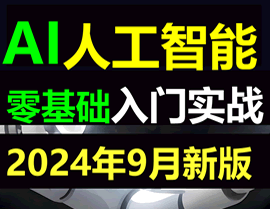【第十三讲】Vue3.x自定义组件上面使用v-mode双休数据绑定 以及 slots以及 Prop 的Attribute 继承 、禁用 Attribute 继承
一、自定义组件使用v-model实现双休数据绑定
前面的课程我们给大家讲过v-model,v-model主要用于表单的双休数据绑定。现在给大家讲解一下v-model实现自定义组件的双休数据绑定。
1.1、单个v-mode数据绑定
默认情况下,组件上的 v-model 使用 modelValue 作为 prop 和 update:modelValue 作为事件。我们可以通过向 v-model 传递参数来修改这些名称:
<my-component v-model:foo="bar"></my-component>在本例中,子组件将需要一个 foo prop 并发出 update:foo 要同步的事件:
const app = Vue.createApp({})
app.component('my-component', {
props: {
foo: String
},
template: `
<input
type="text"
:value="foo"
@input="$emit('update:foo', $event.target.value)">
`
})1.2、多个 v-model 绑定
通过利用以特定 prop 和事件为目标的能力,正如我们之前在 v-model 参数中所学的那样,我们现在可以在单个组件实例上创建多个 v-model 绑定。
每个 v-model 将同步到不同的 prop,而不需要在组件中添加额外的选项。
<user-name
v-model:first-name="firstName"
v-model:last-name="lastName"
></user-name>const app = Vue.createApp({})
app.component('user-name', {
props: {
firstName: String,
lastName: String
},
template: `
<input
type="text"
:value="firstName"
@input="$emit('update:firstName', $event.target.value)">
<input
type="text"
:value="lastName"
@input="$emit('update:lastName', $event.target.value)">
`
})二、自定义组件slots
Vue 实现了一套内容分发的 API,这套 API 的设计灵感源自 Web Components 规范草案,将 <slot> 元素作为承载分发内容的出口。
1、自定义一个按钮组件
<template>
<button class="btn-primary">
<slot></slot>
</button>
</template>
<script>
export default {
}
</script>
<style lang="scss">
.btn-primary {
padding: 5px 10px;
background: orange;
color: #fff;
border: none;
}
</style>
2、调用这个组件
<v-button class="btn-primary">登录</v-button>slot还允许在自定义组件里面传入任意的html标签,或者其他组件
<v-button class="btn-primary">
<i>Icon</i> 登录
</v-button>slot中还可以绑定父组件的数据
<v-button class="btn-primary">
<i>Icon</i> 登录
{{title}}
</v-button>三、slots默认值
<button type="submit">
<slot>Submit</slot>
</button><submit-button></submit-button>“Submit”将会被渲染为:
<button type="submit">
Submit
</button>五、Vue3.x非 Prop 的Attribute 继承
一个非 prop 的 attribute 是指传向一个组件,但是该组件并没有相应 props 或 emits 定义的 attribute。常见的示例包括 class、style 和 id 属性。
2.1、当组件返回单个根节点时,非 prop attribute 将自动添加到根节点的 attribute 中。
如:
子组件DatePicker.vue
<template>
<div class="date-picker">
<input type="date" />
</div>
</template>
<script>
export default {
}
</script>
父组件:
<template>
<date-picker data-status="activated"></date-picker>
</template>
<script>
import DatePicker from "./DatePicker"
export default {
data() {
return {
title: "你好vue"
}
},
components: {
DatePicker
}
}
</script>渲染完成的效果:
<div class="date-picker" data-status="activated">
<input type="datetime" />
</div>2.2、同样的规则适用于事件监听器:
父组件:
<date-picker @change="submitChange"></date-picker>子组件:
mounted() {
console.log(this.$attrs) // { onChange: () => {} }
}2.3、完整示例:
子组件DatePicker.vue
<template>
<select>
<option value="1">Yesterday</option>
<option value="2">Today</option>
<option value="3">Tomorrow</option>
</select>
</template>父组件
<date-picker @change="showChange"></date-picker>methods: {
showChange(event) {
console.log(event.target.value) // 获取子组件选择的值
}
}六、自定义 Attribute 继承
如果你不希望组件的根元素继承 attribute,你可以在组件的选项中设置 inheritAttrs: false。例如:
禁用 attribute 继承的常见情况是需要将 attribute 应用于根节点之外的其他元素。
通过将 inheritAttrs 选项设置为 false,你可以访问组件的 $attrs property,该 property 包括组件 props 和 emits property 中未包含的所有属性 (例如,class、style、v-on 监听器等)。
子组件:
<template>
<div class="date-picker">
<input type="date" v-bind="$attrs" />
</div>
</template>
<script>
export default {
inheritAttrs: false,
data() {
return {
}
}
}
</script>
父组件:
<template>
<date-picker data-status="activated"></date-picker>
</template>
<script>
import DatePicker from "./DatePicker"
export default {
data() {
return {
title: "你好vue"
}
},
components: {
DatePicker
}
}
</script>渲染完成的效果:
<div class="date-picker">
<input type="datetime" data-status="activated" />
</div>七、多个根节点上的 Attribute 继承
与单个根节点组件不同,具有多个根节点的组件不具有自动 attribute 回退行为。如果未显式绑定 $attrs,将发出运行时警告。
<custom-layout id="custom-layout" @click="changeValue"></custom-layout>// 这将发出警告
app.component('custom-layout', {
template: `
<header>...</header>
<main>...</main>
<footer>...</footer>
`
})
// 没有警告,$attrs被传递到<main>元素
app.component('custom-layout', {
template: `
<header>...</header>
<main v-bind="$attrs">...</main>
<footer>...</footer>
`
})







